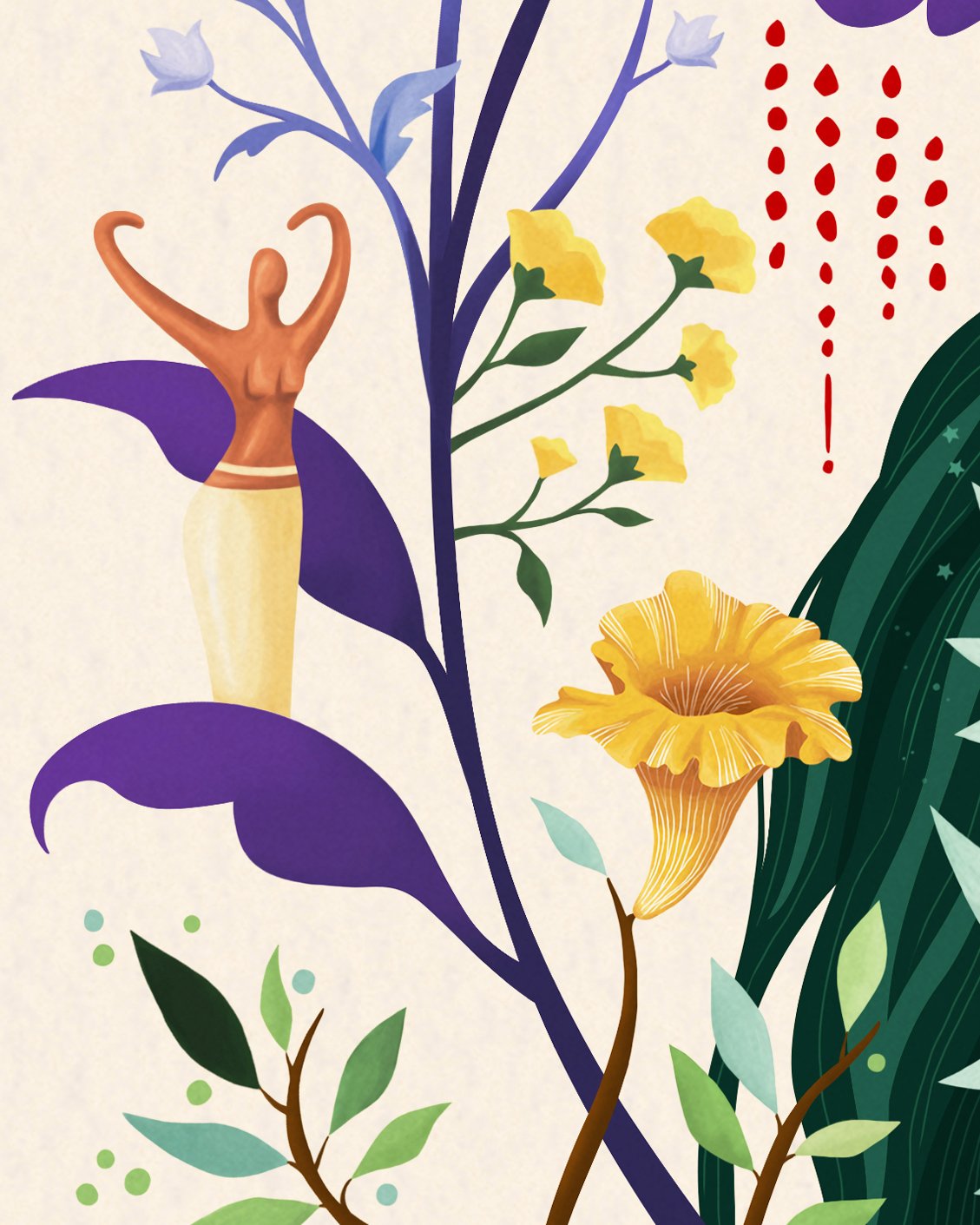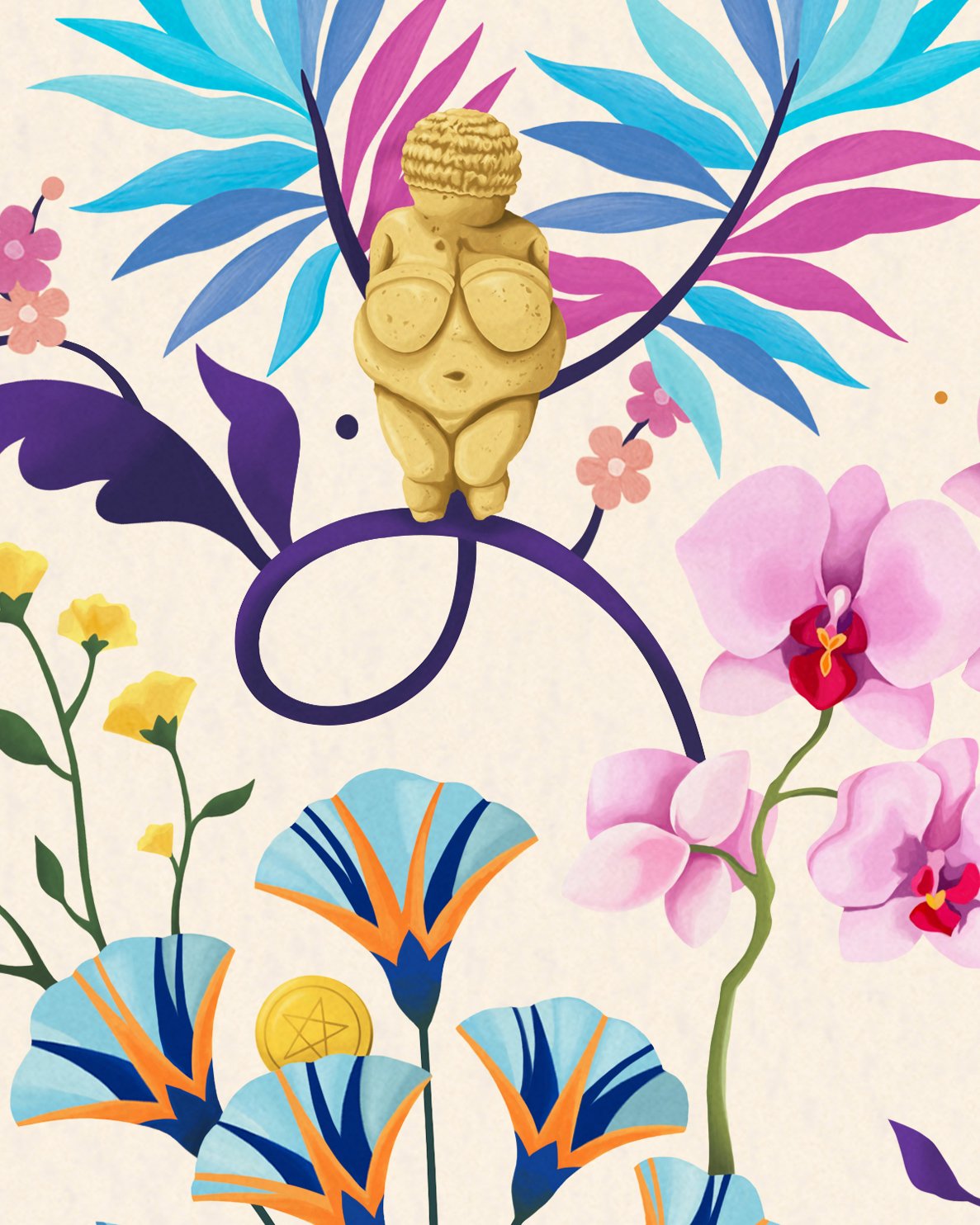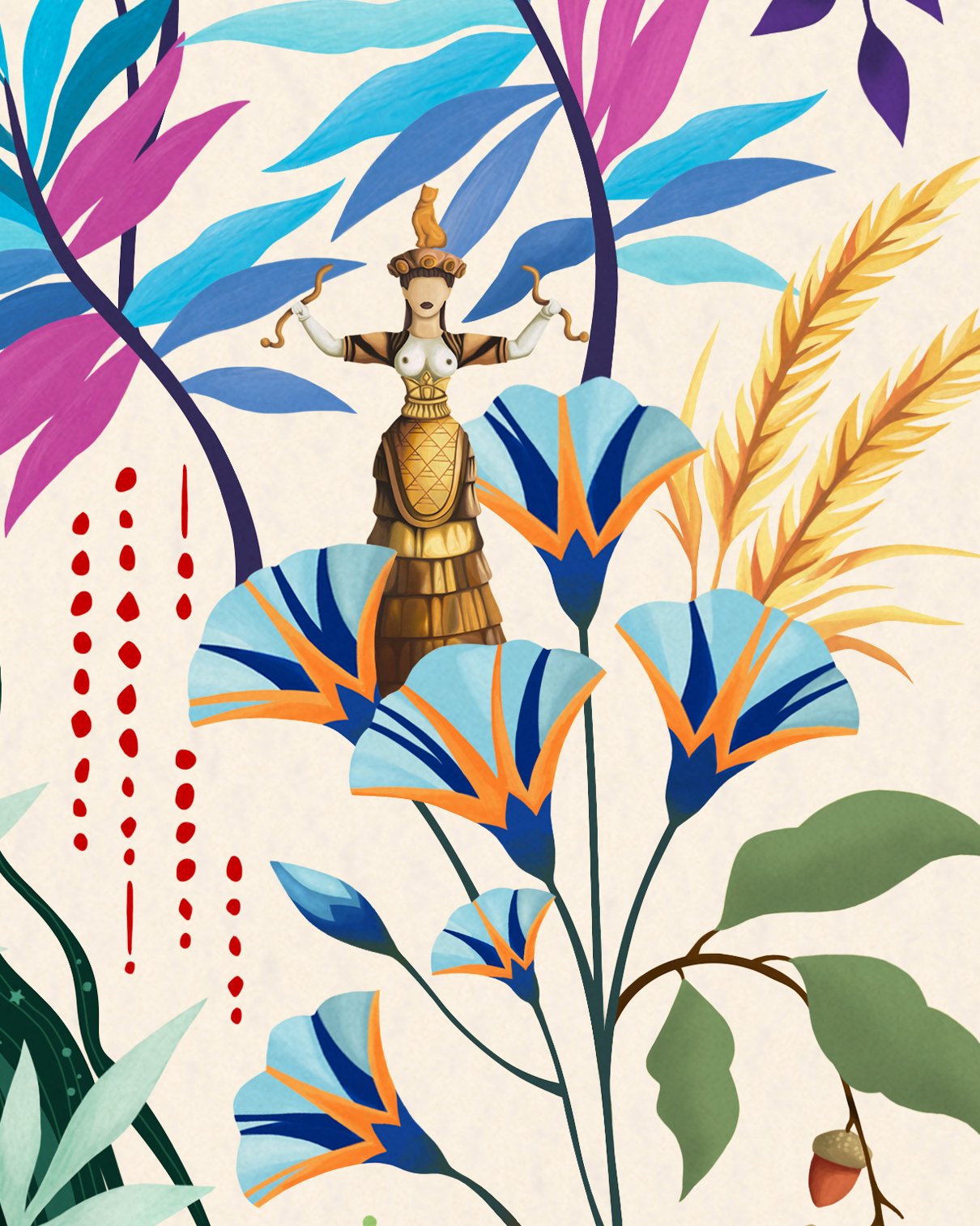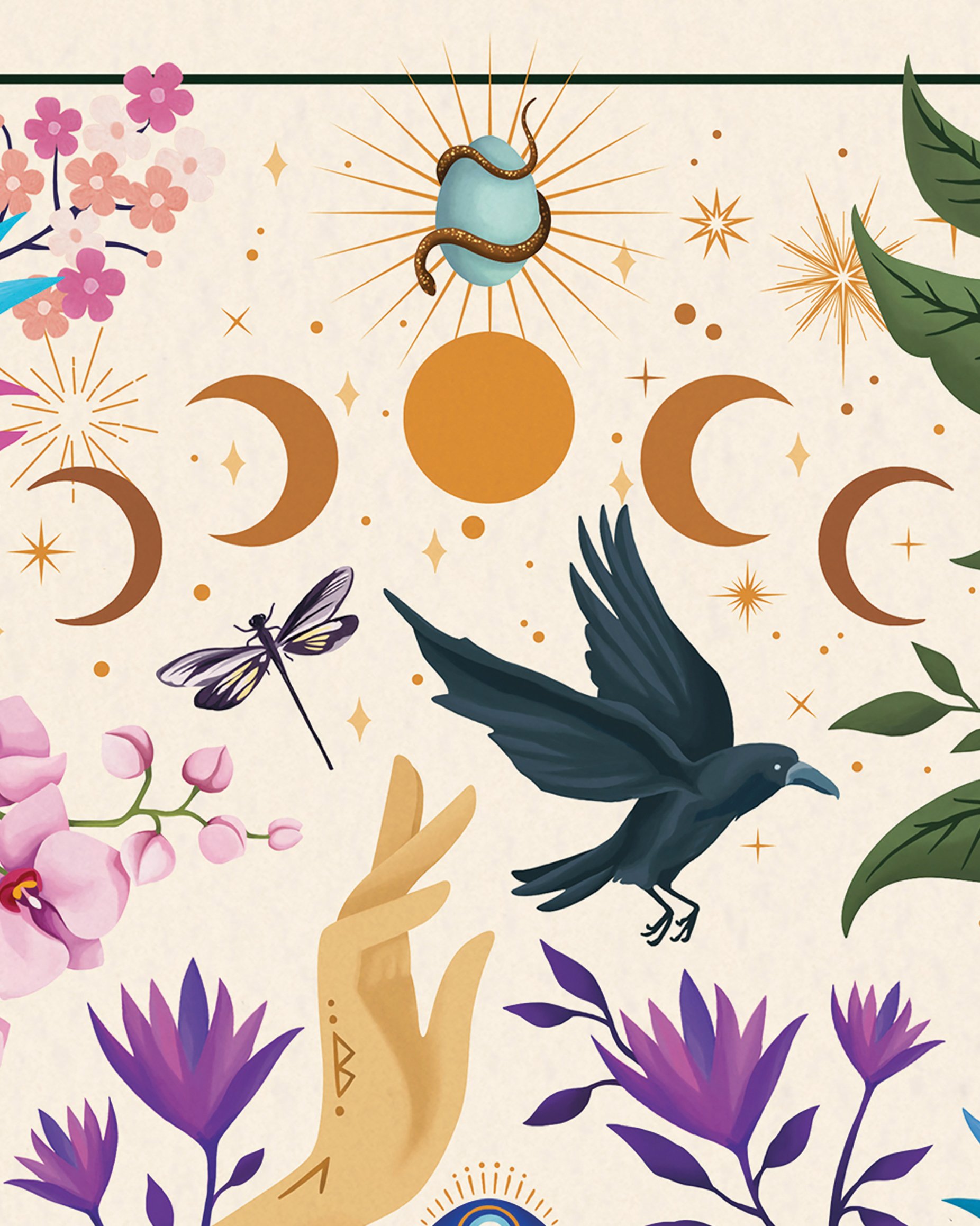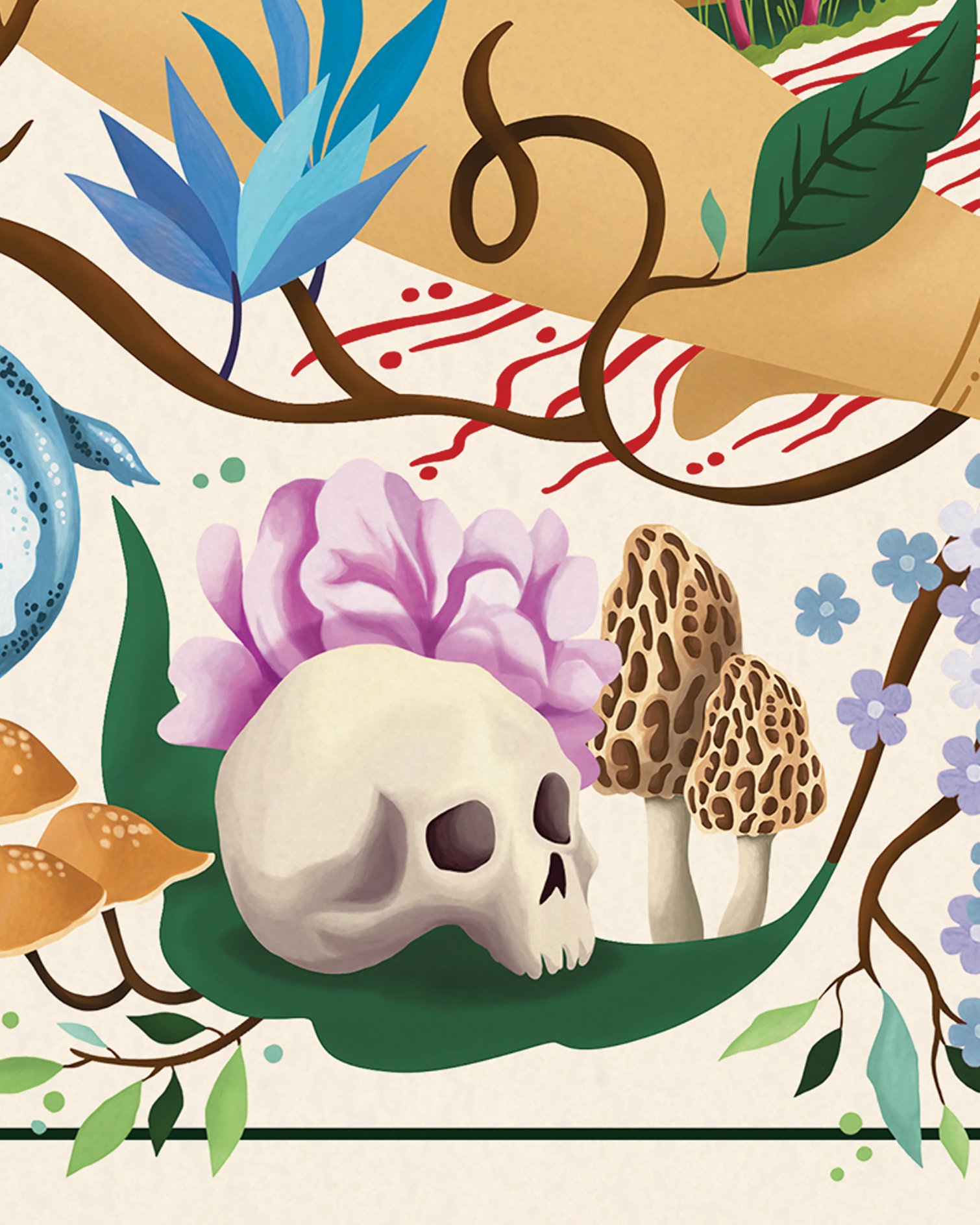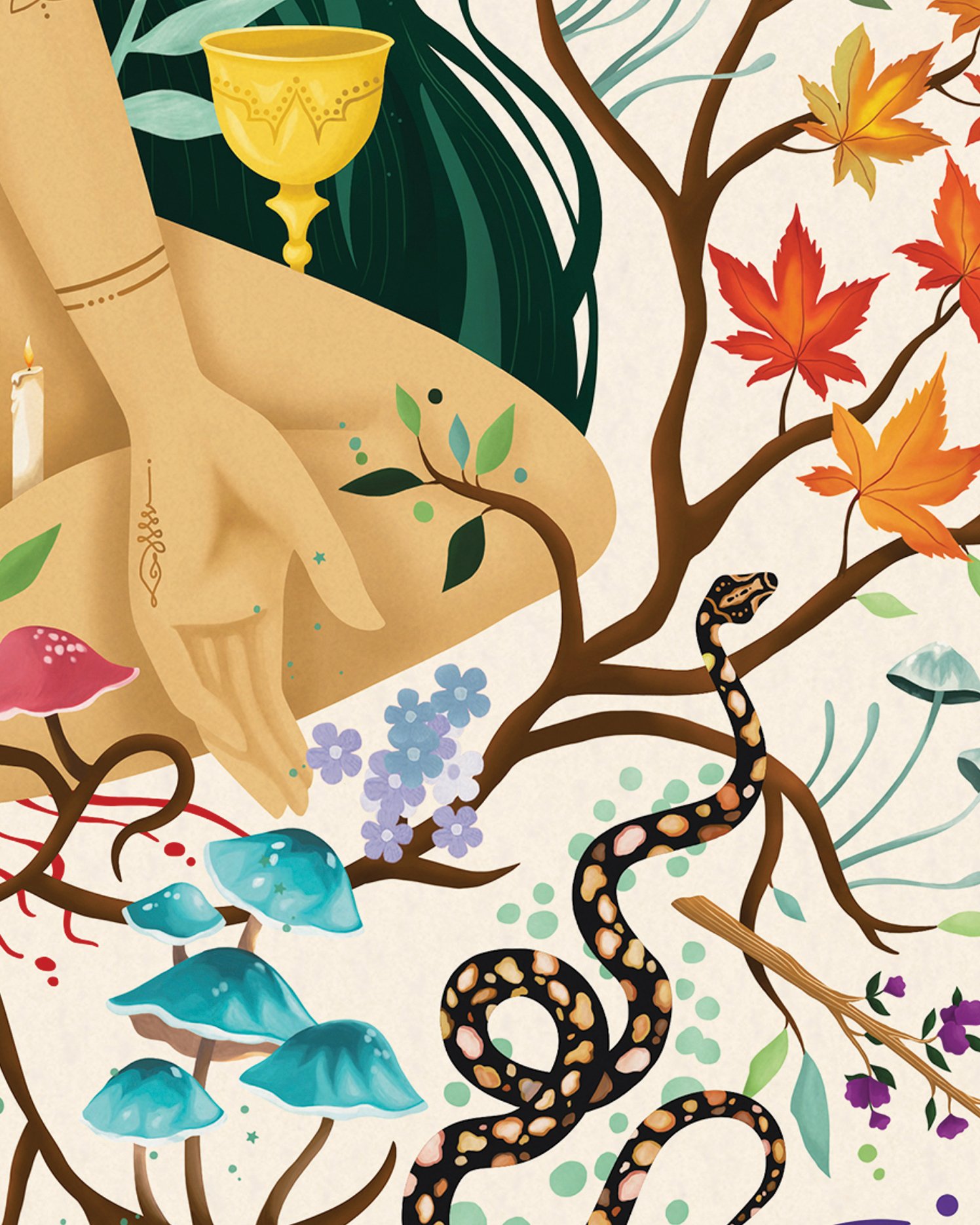Matriarchal Consciousness
Artwork created for Toofoola, a virtual healthcare platform, for their mission-driven NFT campaign to support menstruation awareness and education in the Arab world.
‘The first shamans were female, and menstruation was the original shamanic journey. The word ‘ritual’ comes from the Sanskrit root word ‘rtu’, meaning “menstrual blood.” In ancient cultures a woman’s first menstruation—known as menarche—was a sacred time of initiation into not only womanhood but her magical powers.
In Australia, among the Yolngu, a girl’s first menses was considered to be so powerful that girls bled onto a handcrafted sacred blanket, which older women then kept for good fortune. Later in life, if the girl got sick she would be wrapped in the blanket, which was believed to hold magical healing powers. (continued below)
Menstrual blood was considered in many ancient traditions to be the creative source of human life, literally the flowing lifeblood of our species. In Hindu theory as the Great Mother creates, her substances become thickened and forms a curd or clot. This was the way she gave birth to the cosmos, and women employ the same method on a smaller scale. Indigenous tribes of South America said all mankind was made of “moon blood” in the beginning.
Adam, from the feminine ‘adamah’, means “bloody clay.” The Bible’s story of Adam was lifted from an older female-oriented creation myth recounting the creation of man from clay and moonblood. Alchemy, the search for the Holy Grail, the fountain of life, were all references to the sacred life-giving elixir of womb blood.
Masculine paradigm religion taught that women’s sexual nature was sinful and their menstrual blood unclean. When in fact, across all ancient traditions, shamanic magical powers were associated with the female lineage, and shared with the male in sacred union as a gift’.
Historians believe that the first calendars were created by women, who tracked their menstrual cycles in connection with lunar rhythms, by creating markings on pots and bones, allowing them to pattern their lives in harmony with the cosmos. Women were the first observers of the basic periodicity of nature.
The first 30,000 years of Homo sapiens’ existence were dominated by ‘a celebration of the female processes: of the mysteries of menstruation, pregnancy, and childbirth; of the analogous abundance of the earth; of the seasonal movements and cyclical nature of life. The fact that both human and animal life is generated from the female body and that, like the seasons and the moon, woman's body also goes through cycles led our ancestors to see the life-giving and sustaining powers of the world in female form.’
Ancient societies that celebrated the feminine principle were not built on dominance dynamics, but on relational, partnership models. They were matrifocal (not matriarchal), i.e., woman-oriented and led by women, but they were egalitarian. Women had a place of honor, respect and reverence, not domination. In these societies, women were priestesses, judges, doctors, artisans, athletes, healers, herbalists, midwives, farmers, business entrepreneurs—cultural leaders on all levels. The evidence shows that some of the most “advanced” societies of the ancient world—technologically as well as culturally—were matrifocal and valued feminine intelligence and wisdom.
‘Both the mythical and archaeological evidence indicate that perhaps the most notable quality of the pre-dominator mind was its recognition of our oneness with all of nature, which lies at the heart of the ancient worship of the Goddess. Increasingly, the work of modern ecologists indicates that this earlier quality of mind, in our time often associated with some types of Eastern spirituality, was far advanced beyond today's environmentally destructive ideology.’
Sources: ‘Womb Awakening: Initiatory Wisdom from the Creatrix of All Life’ by Azra & Seren Bertrand / ‘The Great Cosmic Mother’ by Monica Sjöö & Barbara Mor / ‘The Chalice & The Blade’ by Riane Eisler

